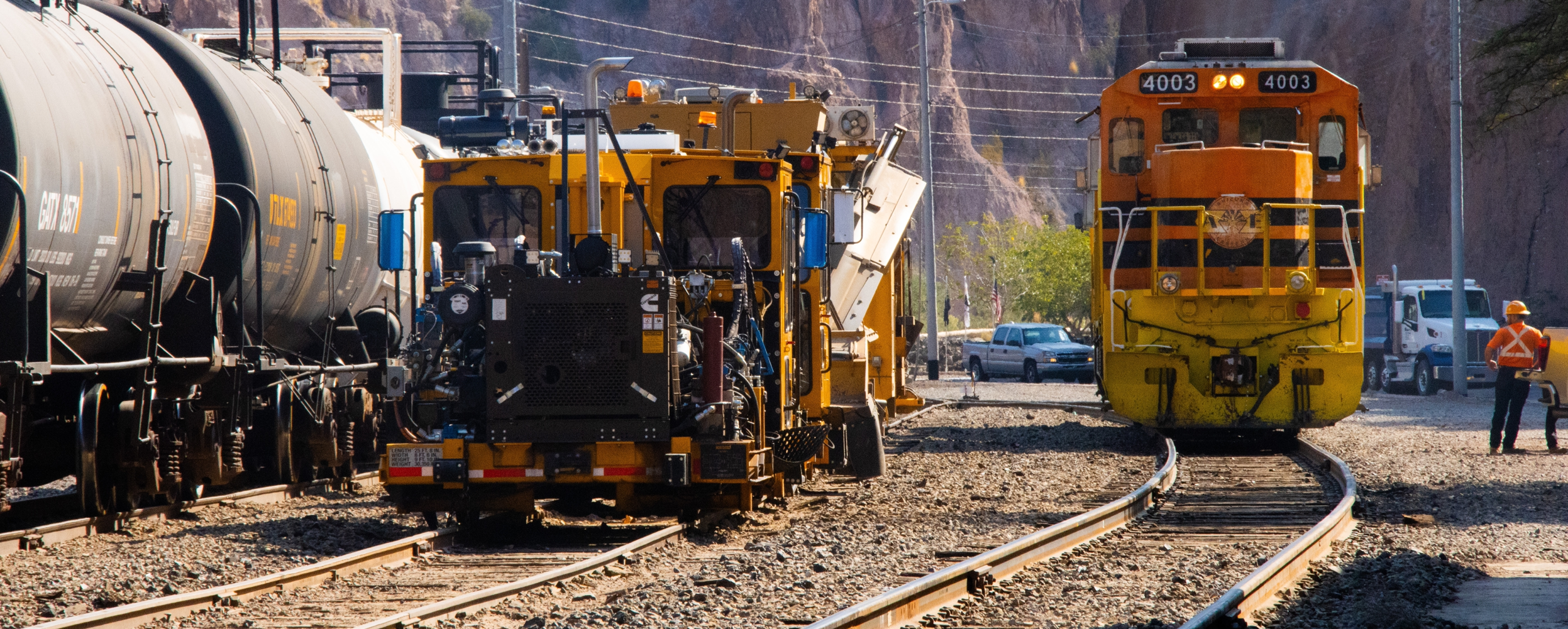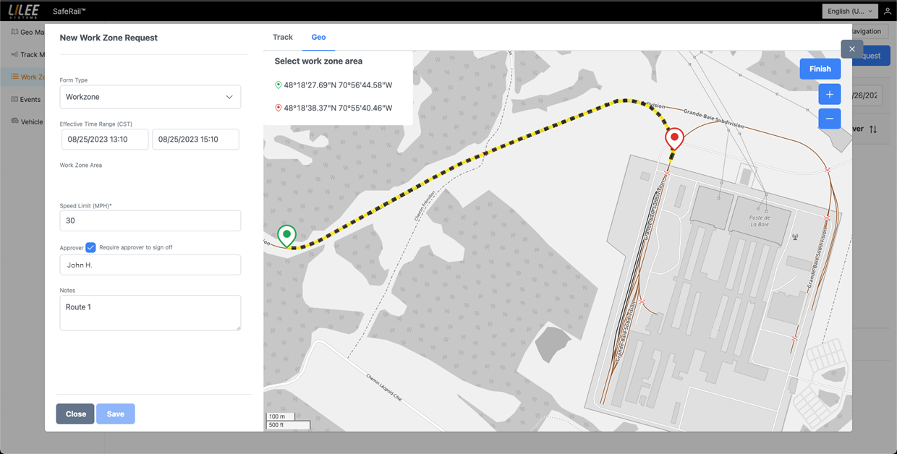On November 1, 2023, the National Safety Transportation Board (NTSB) published recommendations to the Federal Railroad Administration (FRA) for improving rail safety. The NTSB suggests that the FRA should incorporate new technologies into the existing positive train control (PTC) system. As the railway industry moves closer to PTC 2.0, those new technologies can address the potential gaps that may exist in the current generation of PTC. Several railroads are already piloting PTC 2.0 technologies such as LCCAS (Limits Compliance and Collision Avoidance Systems), wireless grade crossing activation systems and AI-based object detection. The Federal Railroad Administration (FRA) is also working to develop new regulations for PTC 2.0.
LILEE Systems, a trusted PTC partner from the very beginning, has a vision and solutions to help the industry move toward PTC 2.0 and benefit from the latest rail safety technologies.
In the NTSB report—Beyond Full Implementation: Next Steps in Positive Train Control, there are several citations of areas, as shown below, that LILEE’s SafeRailTM solutions can address today:
2.3.1 Signal Enforcement
Currently deployed PTC systems enforce signals, and their efficacy depends on signals being set correctly. For example, if a dispatcher prematurely removes signal protection from established working limits, PTC will no longer prevent a train from transiting the work zone. When two trains occupy the same signaling block (a condition permitted by some signals), each train’s speed control will enforce the speed limit set for the block; PTC will not detect or respond to a close approach or collision between the trains.
6.3.1 Chester, Pennsylvania, April 3, 2016
On April 3, 2016, southbound Amtrak train 89 struck a backhoe with a worker inside near Chester, Pennsylvania (NTSB 2017a). This accident occurred within working limits originally established by a roadway worker in charge through exclusive track occupancy. The RWIC requested foul time from the dispatcher to establish working limits. When the foreman in charge of an MOW group changed, Amtrak used a sequential procedure in which one foreman would report the track clear, or release his foul time, with the dispatcher. The other foreman would then request foul time from the dispatcher. On the morning of the accident, a series of fouling activities were released but not re-established when the night foreman transferred authority to the day foreman. This allowed train 89 to enter the working limits and strike the backhoe.
For limits compliance, work zone protection and maintenance-of-way safety, SafeRail provides precise visibility of rail workers’ and MOW vehicles’ locations and can warn the dispatch operators of potential accidents when dispatch tries to remove a work zone. Also, the work zones created from the SafeRail back-office system can be automatically extended after work zone authority expiration to prevent locomotives from entering the work zone.
3.2.1 Object Detection
Object detection systems typically use data from cameras, radar, or other technologies to construct a model of the surrounding environment. The NTSB has documented the limitations of object detection in other modes, both in correspondence with US Department of Transportation modal administrations and in highway accident investigations (NTSB 2017, 2019, 2020). According to the FRA’s Chief of Train Control and Communication (within the FRA’s Office of Research, Development and Technology), the FRA is working to develop performance requirements for object detection systems.
The FRA is also testing object detection systems’ ability to classify objects. Emergency braking can risk derailment, so a system able to automatically initiate an emergency application of the train’s air brakes needs to discriminate between objects and react appropriately. An object that poses no or low risk of derailment—such as a windblown bag of trash or tree branch—requires a different response than a car fouling the tracks at a railroad–highway grade crossing, a person, or the rear of another train.
3.3.2 Red Oak, Iowa, April 17, 2011
On April 17, 2011, an eastbound BNSF coal train C-BTMCNM0-26, BNSF 9159 East, traveling about 23 mph, collided with the rear end of a standing BNSF maintenance-of-way (MOW) equipment train U-BRGCRI-15, BNSF 9470 East, near Red Oak, Iowa (NTSB 2012). The collision resulted in the derailment of 2 locomotives and 12 cars. The lead locomotive’s modular crew cab was detached, partially crushed, and involved in a subsequent diesel fuel fire. Both crewmembers on the striking train were fatally injured.
For advanced object and worker detection, identification and classification, SafeRail encompasses a vision-based and sensor fusion detection system using AI to construct a model of the surrounding environment and can be equipped on MOW vehicles and locomotives without IETMS. Upon detecting an object, SafeRail can precisely identify and classify the object in the path of vehicles, and then provide positive alerts to the operators of the vehicles and the back office of potentially hazardous conditions in time to slow down or stop the vehicle to avoid collisions.
7 Conclusions
Findings
5. Miscommunications between dispatchers and roadway workers in charge can result in positive train control working limits being mistakenly removed, creating an unprotected work zone for personnel within established working limits.
6. Technology that supplements verbal communication along with engineering controls can be used to improve enforcement of work zone protection to eliminate the risk of miscommunication resulting in unauthorized or otherwise unsafe train incursions into established working limits.
8.1 New Recommendations
Require railroads to implement technologies that eliminate the risk of miscommunication between dispatchers and roadway workers in charge regarding established working limits and positive train control protection. (R-23-11)
For roadway worker protection, SafeRail delivers a multi-functional Foreman Terminal for the Employee-In-Charge (EIC), Foreman, or Roadway worker in Charge (RWIC). The SafeRail Foreman Terminal is beyond a traditional EIC Personal Alert Device (PAD) and enables rail workers to:
- Visualize track worker location
- Receive audible & visual advance warning of approaching MOW vehicles and locomotives
- Interact with dispatch to set up work zones
- Request and release work zones electronically
As shown in the figure below, using the SafeRail Foreman Terminal touchscreen, an EIC, Foreman or RWIC can request a work zone with time and track details by simply pointing on the screen to each end of the requested work zone to establish the work zone area. Once the work zone is established, alerts will be provided to warn the workers of approaching MOW vehicles and trains in real time.
In this blog post, we have provided several examples of how LILEE’s SafeRail solutions address the safety issues identified by the NTSB, including but not limited to the areas below:
- Work Zone Limits Compliance
- Object and Worker Detection, Identification and Classification
- Roadway Worker Protection
Contact us today to explore how SafeRail can help you increase safety and reduce costs of accidents through PTC 2.0 technologies and schedule an on-site demo on your equipment.

